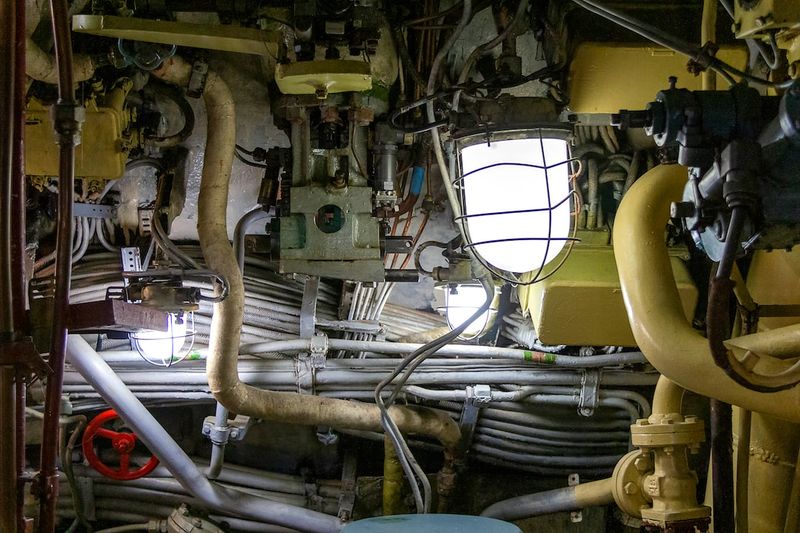Explained: Why does a submarine implode and what follows?
The Tragic Incident
The recent implosion of the deep-sea exploration mini-submarine Titan, while attempting to explore the wreckage of the Titanic, has shaken the world. The US Coast Guard has confirmed that the catastrophic incident resulted in the loss of five lives: Hamish Harding, a British aviator, Paul-Henri Nargeolet, a French explorer, Shahzada Dawood, a British-Pakistani businessman, his son Suleman Dawood, and Stockton Rush, the CEO of OceanGate.
The tragedy serves as a stark reminder of the dangers associated with deep-sea exploration, even in an age of advanced technology and safety measures. As international teams scoured the area in search of the stricken mini-submarine, the challenges of the deep became apparent.
The Challenges of Deep-Sea Exploration
Deep-sea exploration presents unique challenges that increase in complexity with each descent. The immense water pressure, total darkness, and expansive search area make this type of mission extraordinarily difficult. The Titan, designed to carry five people to a depth of 4000 meters (13,120 feet), faced depths exceeding 800 feet, where the water pressure is approximately 80 times that at the surface.
Understanding Submarine Implosion
A submarine implosion occurs when a vessel surpasses its dive depth, leading to extreme water pressure that becomes too much for the superstructure to withstand, ultimately crushing the vessel. To conceptualize this, one can try crushing a soft-drink or soda can in their hand to understand the physics involved.
Implosion occurs when water pressure exceeds the hull’s capacity to withstand it. Design deficiencies, equipment failures, or human errors can contribute to this situation.
The Physical Effects on the Human Body
The specific details of the effects on the human body at extreme depths are not fully known, but the overwhelming water pressure and the sudden change in pressure can cause air-filled spaces within the body, such as the lungs and sinuses, to collapse. This collapse can result in severe injury or even fatality.
In addition, rapid changes in pressure during ascent can lead to decompression sickness, commonly known as bends. This condition occurs when dissolved gases in the bloodstream form bubbles, causing potentially serious health issues.
Other concerns include nitrogen narcosis, which affects divers at deep depths and impairs cognitive function, similar to alcohol intoxication. Oxygen toxicity is another risk, as exposure to high levels of oxygen can lead to seizures or other harmful effects. Furthermore, the extremely cold temperatures in deep-sea environments can potentially cause hypothermia.
The Consequences of an Implosion
If a submersible were to explode at depths of 13,000 feet below the sea, the outcome would be devastating. The significant difference in underwater pressure compared to atmospheric pressure would cause a sudden and immediate change, resulting in rapid air compression within the submarine. This compression would lead to a spike in temperature, potentially causing severe burns or thermal injuries to the occupants. In the case of an implosion at extreme depths, there would be no chance for survival due to the intense compression forces and shockwave generated.
The Experience Inside an Imploding Submersible
It is highly unlikely that a person inside an imploding submersible would feel pain. The implosion would be immediate and incredibly powerful, resulting in instant death, which is most likely painless.
Editorial: The Perils of Deep-Sea Exploration
The tragic incident involving the Titan highlights the dangers that come with pushing the boundaries of human exploration. Deep-sea exploration poses significant risks due to the unforgiving nature of the underwater environment. It is a reminder that even with the most advanced technology and safety precautions, there are limits to what humans can safely accomplish in the depths of our oceans.
However, this should not discourage scientific exploration. It is crucial that scientists, engineers, and explorers continue to push boundaries and expand our understanding of the deep sea. By learning from past incidents and incorporating lessons into future expeditions, we can strive for safer methods and technologies to minimize risks.
Advice: Balancing Exploration and Safety
As we venture further into the unexplored depths of our oceans, it is essential to maintain a delicate balance between exploration and safety. Proper planning, meticulous design, and thorough testing of deep-sea vehicles and equipment are critical to ensuring the well-being of those involved in these missions.
Public and private entities engaged in deep-sea exploration should prioritize safety, invest in research and development, and collaborate to enhance safety protocols. The sharing of knowledge, lessons learned, and best practices can help mitigate risks and prevent future tragedies.
It is also essential to recognize the limits of human endurance and acknowledge the immense challenges posed by the deep sea. Developing advanced robotic technologies that can withstand the extreme conditions and perform complex tasks can decrease the need for human presence in hazardous environments.
Ultimately, the quest for knowledge and discovery must be tempered with an unwavering commitment to safety. By striking the right balance, we can unlock the mysteries of the deep sea while protecting the lives of those who embark on these daring expeditions.

<< photo by Maria Krasnova >>
The image is for illustrative purposes only and does not depict the actual situation.
You might want to read !
- “The Enigmatic Implosion of Titan: Unraveling the Mystery Behind Its Collapse”
- Underwater Disaster: Catastrophic Implosion Strikes Titanic Tourist Sub
- Unraveling the Mystery: TikTok Videos Shed Light on Submarine Disaster
- Carly Rae Jepsen Unleashes Infectious Disco Anthem, Celebrating Shyness in Shy Boy
- Catastrophic Implosion of the Titan Submersible: Delving into the Depths of Disaster
- “Unveiling the Intriguing Journey of Love Island Star Kady McDermott: From Unknown to Explosive Fame”
- The Catastrophic Implosion: Unveiling the Tragic Demise of the Titan Submersible




